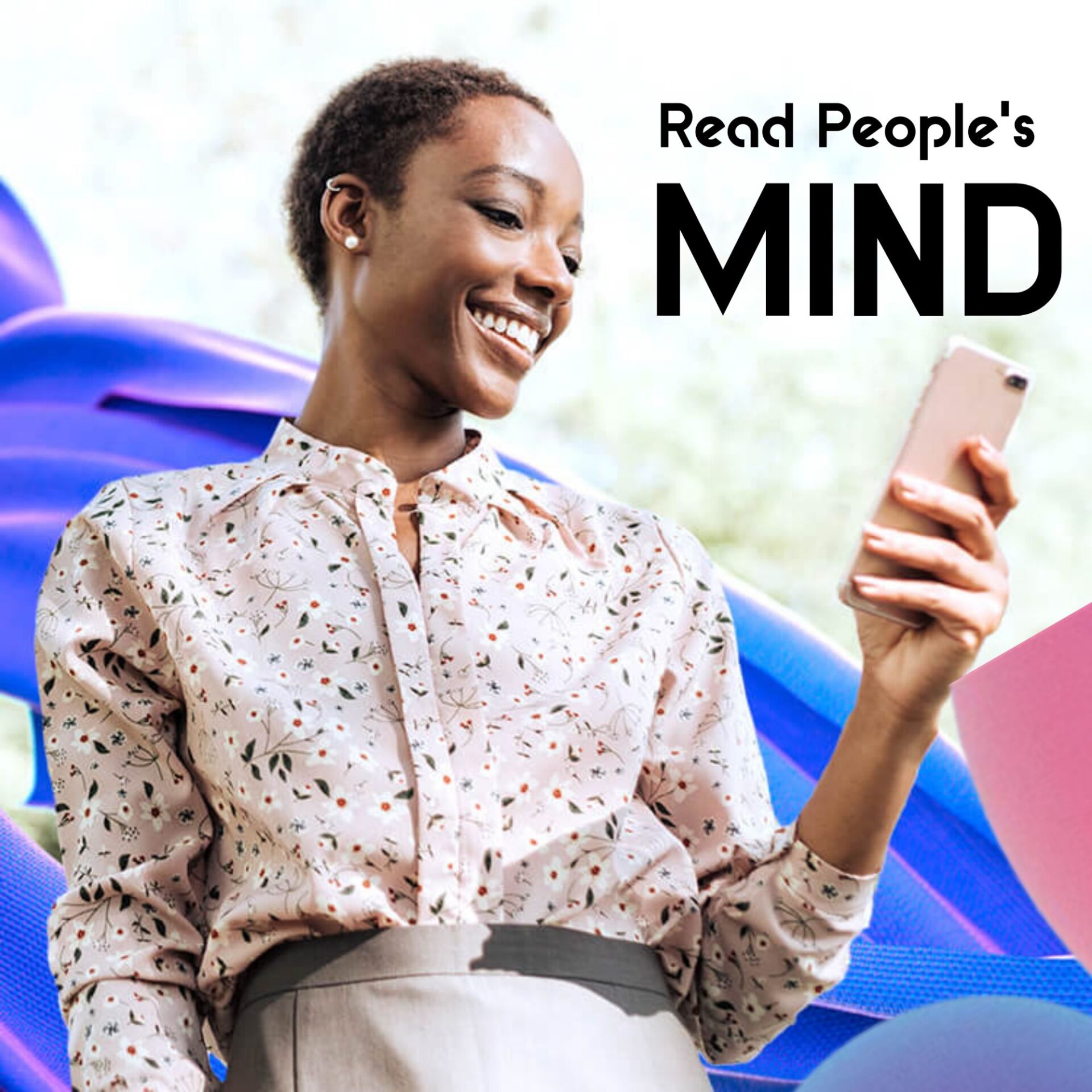15 Powerful Techniques to Read Minds and Understand People Better in Any Situation

Introduction
In our daily lives, social interactions play a crucial role in establishing connections and fostering relationships. One skill that can greatly enhance these interactions is the ability to read people’s minds. While it may seem like an impossible feat, understanding the hidden thoughts and emotions of others can lead to more effective communication and deeper connections. In this article, we will 16 tools and tactics that can help you read people’s minds, accompanied by real-life examples in conversations. By mastering these techniques, you can become more perceptive, empathetic, and skilled in understanding the people around you.
1. The Art of Observation
Keen observation is a fundamental aspect of understanding people’s thoughts and feelings. By paying close attention to non-verbal cues and subtle changes in behavior, you can gain valuable insights into what someone is truly thinking or experiencing.
For instance, during a conversation, you may notice changes in someone’s body language, such as crossed arms or fidgeting. These signs typically indicate discomfort or uneasiness, suggesting that the person may not fully agree with or feel comfortable discussing the topic at hand. Similarly, facial expressions and micro-expressions can reveal a wealth of information. A raised eyebrow, a slight smirk, or a furrowed brow can all provide clues to someone’s true emotions, even if their words may suggest otherwise.
2. Empathy and Perspective-Taking
Developing empathy allows us to connect with and understand others on a deeper level. By putting ourselves in someone else’s shoes, we can gain insight into their thoughts, emotions, and motivations. This understanding enables more effective and compassionate communication.
For example, imagine a disagreement with a friend about a political issue. Instead of solely focusing on your perspective, take a moment to genuinely consider their point of view. Reflect on the emotions behind their words, the experiences that shape their beliefs, and the values they hold dear. This exercise in perspective-taking can lead to a more respectful and productive exchange, allowing for a deeper understanding of each other’s minds.
3. Active Listening Techniques
Active listening is a vital tool in reading people’s minds. It involves fully engaging in a conversation, not only hearing the words spoken but also grasping the underlying thoughts and emotions behind them. By employing various active listening techniques, you can better comprehend the true meaning of someone’s words.
A simple yet powerful technique is paraphrasing. After the speaker shares their thoughts, restate their main points in your own words to confirm your understanding. This not only shows that you are actively listening, but it also gives the speaker an opportunity to clarify or provide further insight. Another technique is reflecting feelings. By mirroring the speaker’s emotions through your own tone and body language, you create a safe space for them to express their thoughts authentically.
4. Body Language Decoding
Body language serves as a powerful tool for deciphering people’s thoughts and feelings. Often, non-verbal cues can reveal more about someone’s true intentions than their words alone. Understanding the significance of different body language signals can significantly enhance your ability to read minds.
For instance, crossed arms or fidgeting are widely recognized as signs of discomfort or defensiveness. In a conversation, these behaviors may indicate that the person feels uneasy, defensive, or closed off to further discussion. On the other hand, open gestures and an erect posture often convey confidence and openness. By recognizing these cues, you can adjust your approach to foster a more conducive and comfortable environment for effective communication.
5. Verbal Cues and Language Patterns
Verbal cues and language patterns provide valuable insights into people’s thoughts and intentions. By analyzing their speech, hesitation, certainty, or even inconsistencies, you can gauge their underlying emotions and motivation.
For example, frequent hesitations or a lack of conviction in someone’s speech may signify uncertainty or doubt. On the other hand, excessive confidence without substantiating evidence could indicate attempts to manipulate or divert attention. By paying attention to these linguistic patterns, you can gain a clearer understanding of someone’s genuine thoughts and intentions in a conversation.
6. Context and Environment
Understanding the influence of context and environment is crucial in reading people’s minds accurately. The setting in which a conversation takes place can significantly impact how individuals express themselves and interpret the thoughts and feelings of others.
For instance, discomfort in a noisy or crowded environment may affect someone’s ability to communicate openly. They might become reserved or struggle to express their true thoughts due to distractions or concerns about privacy. Similarly, cultural nuances in communication styles can affect the way people express themselves. Recognizing and adapting to these contextual factors allow for more accurate understanding and minimizes miscommunication.
7. Psychological Profiling
Psychological profiling involves analyzing speech patterns, behavioral norms, and personality traits to gain insights into someone’s thoughts and intentions. By observing patterns across different situations, you can develop a deeper understanding of individuals.
For example, certain speech patterns may indicate specific personality traits. A person who frequently uses assertive language and exhibits strong opinions may possess an outgoing and dominant personality. Recognizing these patterns can help you tailor your communication approach and anticipate how they may interpret your words or actions.
8. Intuition and Gut Feelings
Intuition and gut feelings can play a significant role in reading people’s minds. These subtle sensations often provide insights that go beyond what is explicitly expressed verbally.
Trusting your initial instincts about someone’s intentions or feelings can provide valuable guidance. Have you ever met someone and immediately felt a positive or negative impression without any logical explanation? These intuitive feelings often stem from subtle cues and signals that our subconscious mind picks up on, such as body language, tone of voice, or facial expressions. Honoring these gut feelings can deepen your understanding of others and improve your ability to read minds.
9. Building Rapport and Trust
Establishing rapport and trust is essential for creating an environment that encourages open and honest communication. When people feel comfortable and safe, they are more likely to share their genuine thoughts and emotions.
Active listening plays a vital role in building rapport. By actively engaging in a conversation, showing genuine interest, and responding empathetically, you foster a sense of trust and understanding. In a professional setting, active listening can help build rapport by ensuring that colleagues or clients feel heard and valued.
10. Emotional Intelligence
Emotional intelligence is a key component in reading people’s minds effectively. By managing and understanding your own emotions, you become better equipped to interpret the emotions of others.
During difficult conversations, it is essential to manage your own emotions to maintain clarity and perspective. By recognizing and regulating your emotional responses, you can stay focused on understanding the thoughts and feelings of the other person. Additionally, emotional intelligence enables you to pick up on emotional cues, such as changes in tone or gestures, further enhancing your mind-reading capabilities.
11. Cultural Sensitivity
Cultural differences profoundly impact how people express themselves and interpret others’ thoughts and feelings. It is crucial to be mindful of these differences to avoid misinterpreting behaviors and creating misunderstandings.
For example, direct communication styles may be perceived as rudeness in some cultures, while in others, it may be considered assertive and respectful. Similarly, body language norms can vary significantly across cultures. Recognizing and respecting these cultural differences ensures that you interpret people’s thoughts and intentions accurately and fosters more effective cross-cultural communication.
12. Mindfulness and Presence
Practicing mindfulness can enhance your ability to read people’s minds by enabling you to be fully present and attuned to subtle cues and changes in the conversation.
By being fully present in a conversation, you minimize distractions and can dedicate your attention to observing and interpreting non-verbal cues, tone of voice, and other subtle signals. Mindfulness also allows you to notice changes in the conversation’s flow, as well as shifts in emotions or underlying thoughts. This heightened awareness enhances your mind-reading abilities and promotes more meaningful connections.
13. Adapting Communication Styles
Adapting your communication style to match that of the person you are interacting with can facilitate better understanding and rapport.
For example, when communicating with different age groups or authority figures, adjusting your language and tone can help establish a connection based on mutual respect. Similarly, aligning your communication style with someone’s preferences, such as using more visual aids or providing written summaries, can enhance their understanding and create a smoother flow of thoughts and ideas in the conversation.
14. Ethics and Respect
When reading people’s minds, it is essential to uphold ethical principles and respect personal boundaries. Mind-reading skills should be used responsibly and without manipulation or exploitation.
Respecting privacy is paramount. Avoid prying into personal matters unless explicitly invited to share. Respect for boundaries ensures that you establish and maintain trust in your relationships. Additionally, using mind-reading skills responsibly allows for more authentic and genuine connections, where individuals feel heard, understood, and valued.
15. Micro-Expression Recognition
Micro-expressions are fleeting facial expressions that occur involuntarily and often reveal genuine emotions, usually lasting for a fraction of a second. Recognizing and interpreting these micro-expressions can provide profound insights into someone’s true feelings, even when they try to conceal them.
Examples:
Quick flashes of emotion: Catching a micro-expression of disgust when discussing a certain topic, revealing underlying feelings despite attempts to hide them.
Subtle signs of happiness or sadness: Noticing a fleeting smile or a momentary furrowed brow, indicating concealed joy or distress during a conversation.
Conclusion
Enhancing your ability to read people’s minds is a valuable skill that can significantly impact your interpersonal relationships and communication effectiveness. By using the 16 tools and tactics outlined in this article, you can develop a greater understanding of others and foster deeper connections. Remember to practice these skills regularly and refine them over time. With dedication and patience, you can become a skilled mind-reader, enriching your personal and professional interactions

